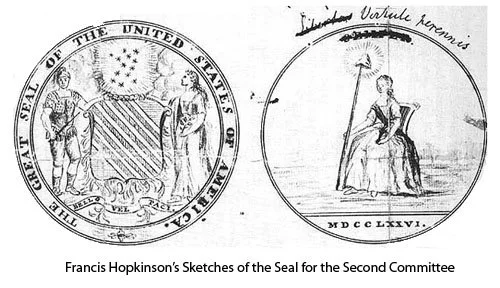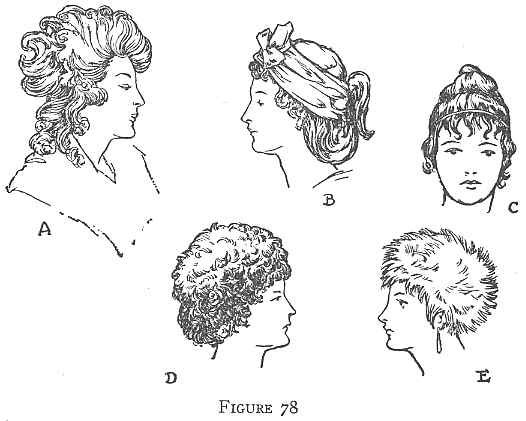
Teaching + Learning Resource
Changing Liberty
Liberty was a rallying call for the start of the American Revolution. After the revolution, when the US Mint began minting coins, the images of Liberty changed rapidly. Does the changing representation of Liberty as a woman also indicate a changing vision of the concept of liberty itself—now that the war was won?
For more discussion of the topic, see the blog on Changing Liberty.
Analysis, Insights, Links
-

Analysis
Our focus here is on changing concepts of liberty as well as changing depictions of liberty on Early American Large Cents.
When we look at the images in the article below, we see depictions of America, Columbia, and Liberty that can make us cringe. Liberty is decidedly white and pure. America is bare-breasted and native. It’s important to note that these images would have been immediately recognizable and would have activated associations for people of the time. Note in the image above, while many contemporary viewers would see the Black African American sitting below the white woman as problematic, for the time period this would have been positive and noteworthy. He has no shackles and he can read. He has the time—he has the liberty— to sit and read.
-

Insights
Insights offers different focuses and perspectives on the topic, including views from different time periods.
Brief definition of iconography and how it works.
Numismatic views of the large cents and the 1793 cent from the Newman Numismatic Portal.
On the iconography of Liberty and her similarity to Britannia, see 185-187.
From 1879, a dismissive evaluation of US coins, especially of their iconography.
-

Links
A few links that offer further insights into the depiction of Liberty and the role of women in the American Revolution.
The hairstyles of Liberty change significantly from 1793-1814. This website discusses colonial era clothing and fashion, 1775-1800.
NBC News video of the role of women in the American Revolution
Questions
Questions help us cultivate curiosity. Use these questions to begin your own journey thinking about the topics. If you’re a teacher, these questions offer you some starting points for class discussion. All questions are designed to encourage people to make links between the topics and their own beliefs.
What do you think makes a strong symbol for coins or money? Who do you think should decide?
What value would you highlight on a coin—and why?
We live in a digital world—you are reading this on a screen. Many people nowadays do not handle money, which is inscribed with images tied to national values. Instead they use credit and debit cards, which are inscribed with the images of banks and credit unions. How do you think national identity changes or shifts if we no longer use and share coins and paper money?
Activities
Our suggested activities use cultural artifacts to engage students in thinking through abstract ideas. Each learning resource includes a specific focus and objectives. We encourage you to choose relevant materials for your class from the Insights and Links sections above. Please use the Analysis section and links as background knowledge for your lesson.
K-6
Goal: Explore the connection between nation and ideals
Outcomes: Students will be able to list ideals and link to concrete representations, deepening their understanding of the power of images.
Activities: group work, listing, designing coins, presenting designs
Time: 50 min-1 hour. With older grades, could be expanded to two class sessions.
For younger children, begin with having them team up and ask each other what qualities they think are most important and why? (ex. kindness, jumping high, friendship).
From that starting point, ask them if they think everyone should agree that these are important? Why/not? The goal here is to get them to differentiate between individual ideals and shared ideals.
For slightly older grades, it’s possible to introduce discussions of ideals that hold a nation together. For older children, decide what elements you want to use from the Analysis section, above, and use that information as a scaffold for linking representation of abstract ideas to concrete images, such as liberty. Ask groups to make a chart listing national ideals, and then historical or literary or physical proof of that ideal. Then ask them to think of concrete instances that deny the ideal.
After these discussions and the creation of the chart, which could be a class-wide project , have them break into teams to discuss the ideals they think the country should support. Encourage them to choose ideals from earlier periods, such as the Revolutionary War as well as some contemporary ideals. Then they should design a coin that represents their team’s agreed upon principle, perhaps choosing an earlier principle for one side of the coin and a contemporary principle for the other side. This last step allows discussion of developing and changing national ideals.
Once the coins are designed, have students present their coin and their reasoning for the ideals they choose.
7-12 and Beyond
Goal: Introduce or deepen the concept of representation and how it links to nation and ideals.
Outcomes: Students will be able to use concepts such as iconography and representation to explain and illustrate national ideals.
Activities: group work, research, creative presentations
Time: two class periods. One for introduction and group work. One for presentations.
Read Analysis above for an overview of the topic. You might also look at the blog post on liberty, which explores the depiction of liberty on coins. Show the students these different coins and visions of Liberty. Links, above, includes information about iconography, which older students might find interesting. Use iconography to discuss the different designs of the coin.
Having carefully examined the coins, begin a class discussion about key ideals the students think the nation should stand for. Your class might be interested in a discussion about who sets ideals and where they come from. If you want to explore this, try to keep the discussion fairly tight, allowing about 10-15 minutes. Then have students illustrate their key ideals with concrete examples of the ideals, as well as counter-examples that either call the ideal into question or that introduce different ideals. Divide the class into those supporting the ideals and those who want to introduce different ideals. Then switch the teams, so that they’re supporting the “opposite” side. Have students work in their groups to delve more deeply into the ideals, sourcing images from the internet to represent their ideal. They can also support their ideas with historical or literary sources. It’s possible to choose a new ideal for the 21st century. Once the team decides on the ideal, it should write a speech that tells people why and how their ideal should be represented. Feel free to deliver this speech in any way the group chooses, such as rap, poetry, presentation and so on.
